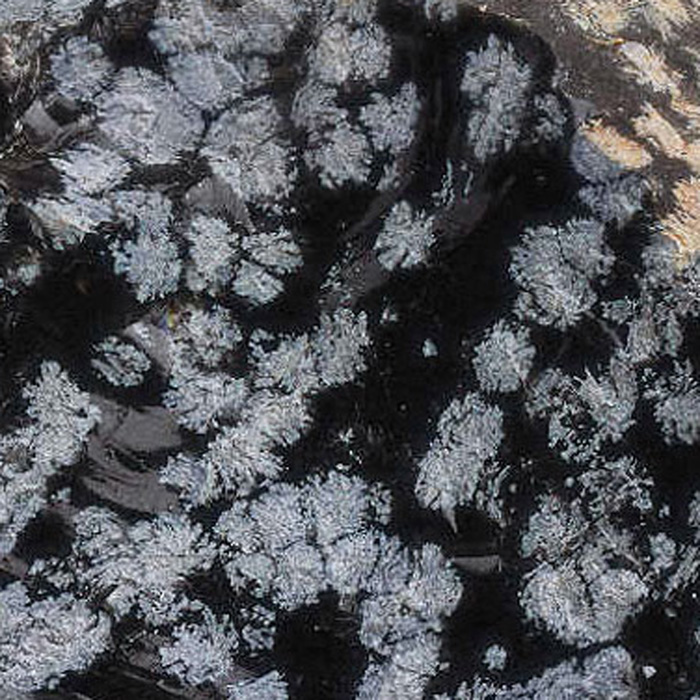Group: Volcanic igneous rock
Colors: Black groundmass with white “snowflakes”
Hardness: 5
Formation: Anhedral crystals
Principal Sources: Worldwide
Special Notes: Obsidian is produced when felsic lava extruded from a volcano cools rapidly with minimum crystal growth. Because of this lack of crystal structure, obsidian blade edges can reach almost molecular thinness, leading to its ancient use as projectile points and blades, and its modern use as surgical scalpel blades. Obsidian has been used in cardiac surgery; blades have a smooth cutting edge many times sharper than high-quality surgical steel. Obsidian is mineral-like, but not a true mineral because as a glass it is not crystalline; in addition, its composition is too complex to comprise a single mineral. It is sometimes classified as a mineraloid. Snowflake obsidian is created by the inclusion of small, white, radially clustered crystals of cristobalite in the black glass produce a blotchy or snowflake pattern.

